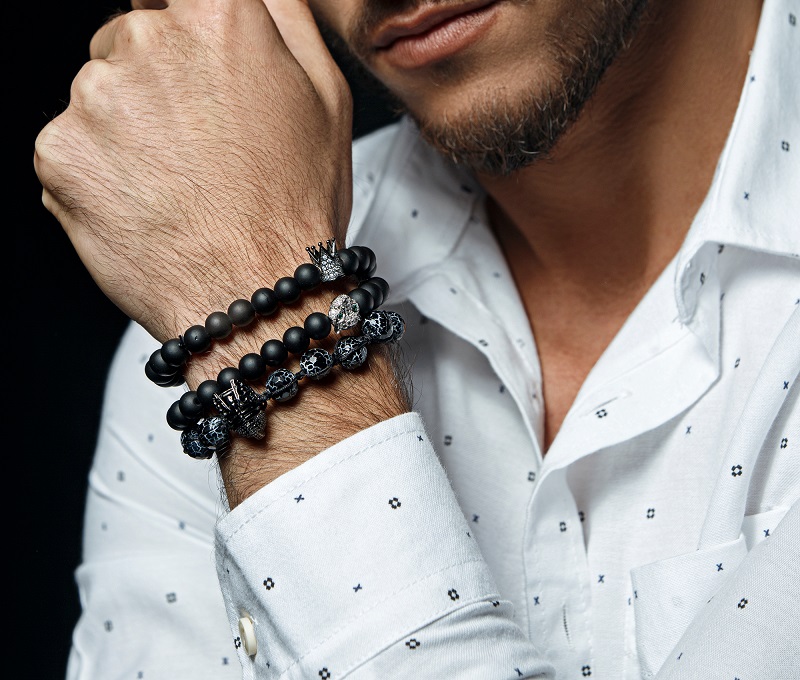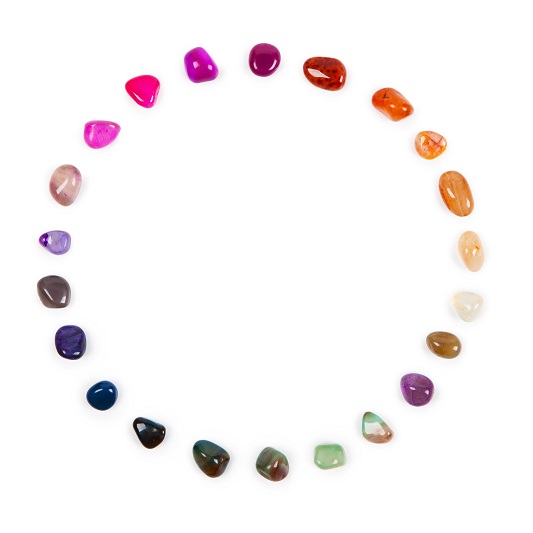Gemstone of the Week – Tourmaline

Gemstone of the Week: Amethyst
5th January 2018
Gemstone of the Week: Lapis Lazuli
19th January 2018Tourmaline is the formal name for the group of gem-quality boron silicate minerals. Occurring in a wide variety of colours, tourmaline gemstones are popular worldwide. Its diverse range of colours is what the stone is most renowned for, with even its name referring to this quality.
Thought to derive from the Sinhalese word ‘turamali’, the name of the stone means ‘stone with various colours’. Loved for thousands of years, Tourmaline was first thought to be used as a precious stone in the 1500s, though it didn’t become worldly popular until the 1800s.
In the late 1800s, an American mineral collector named George Kunz introduced Green Tourmaline to the renowned brand Tiffany & Co. Sparking an interest in the gemstone, this introduction is thought to have led to Tourmaline’s popularity on the jewellery market. In this article, we explore Tourmaline in more detail.
How to Identify Tourmaline
For trained professionals, identifying Tourmaline is simple. Typically, specimens of the stone contain traces of iron, magnesium, aluminium, sodium, magnesium, lithium, potassium, and copper. The levels of these trace impurities determine the specimens overall colour. Tourmaline can also be distinguished by its distinct crystal system. Forming in the trigonal crystal system, Tourmaline stones have three-side triangular prisms in their structure. Specimens of Tourmaline have distinct gemological properties which can also help to distinguish the gem from similar stones. While other gems may be similar in colour, Tourmaline can be identified by its superior hardness of 7.5 on the Mohs scale. Additionally, the stone has strong pleochroism and poor cleavage. Another great way to identify the gemstone is by its unique piezoelectric properties. When subjected to mechanical pressure or extreme changes in temperature, the stone can produce and hold an electrical current. Because of this quality, Tourmaline is often referred to as the ‘electric stone’.
Different Colours and Types of Tourmaline
As mentioned, Tourmaline is the formal name for the group of gem-quality boron silicate minerals. Within this group, the major stones include Schorl, Dravite, Uvite, Liddicoatite, and Elbaite. Out of these, Schorl is the most widely occurring variety. Over 95% of Tourmaline deposits can be classified as Schorl; however, this variety is the least desirable gemstone in the group. Most of the Tourmaline gemstones on the market today are specimens of Elbaite.
As there are so many different gemstones that fall under the Tourmaline category, most specimens are traded under colour-specific names, instead. Some of the most common Tourmaline trade names include Paraiba, Rubellite, Achroite, and Indicolite. Below, we explore some of the most common colour-specific Tourmaline trade names.
Achroite
Achroite is an extremely rare form of Tourmaline, usually appearing as a colourless gemstone.
Indicolite
Indicolite refers to a blue Tourmaline gemstone.
Paraiba
Named after the state it was first discovered in, Paraiba is usually light-blue in colour, with some specimens appearing blue-green, bright-blue, or even green-copper.
Rubellite
One of the most popular varieties, Rubellite boasts an intense red hue. Certain specimens can appear pink-red or violet-red.
Where is Tourmaline Found?
Until the 1900s, the USA was the primary source for gem-quality Tourmaline. Because of this, Tourmaline is still the national gemstone of America. Today, fine-quality Tourmaline can be found all over the world, with notable deposits coming from Afghanistan, Australia, Brazil, Burma, India, Italy, Madagascar, Tanzania, Mozambique, Namibia, Nepal, Nigeria, Pakistan, Russia, Sri Lanka, Switzerland, the United States, and more.
Though Tourmaline can be found worldwide, certain locations are known for producing particular varieties. Tanzania is famous for producing fine-quality Green Dravite, while the best-quality Paraiba is often sourced from Nigeria and Mozambique. Zambia is known for producing intense red Rubellite, and deposits of rare blue Indicolite are often found in Afghanistan.
Healing Properties of Tourmaline
Thought to be a stone of powerful detoxification, Tourmaline is commonly used within crystal healing. According to the ancient Hindu belief systems, the stone balances the body’s energy. Tourmaline is also popular within chakra cleansing, with different coloured stones affecting different chakras. Below, we explore how each colour is used.
Orange Tourmaline
Orange Tourmaline is thought to be linked to the sacral chakra, formally referred to as the Swadhisthana. The stone cleanses this chakra to benefit relationships, the sexual organs, creativity, and enthusiasm.
Red Tourmaline
Red Tourmaline is often used to cleanse the base chakra. It is associated with grounding and survival.
Yellow Tourmaline
Yellow Tourmaline relates to the third chakra, which is associated with the digestive system, anxiety, fear, and metabolism. Additionally, Yellow Tourmaline is linked to intellect, making the stone ideal for those studying at school, college, or university.
Green Tourmaline
Green Tourmaline works best with the fourth chakra, benefitting communication, thought, and expression.
Pink Tourmaline
Pink Tourmaline is used with the crown chakra which relates to consciousness, love, and compassion. Additionally, Pink Tourmaline is thought to benefit the pituitary gland.
Black Tourmaline
Black Tourmaline is believed to cleanse the chakra system in its entirety. Black specimens are also thought to protect their beholder against negative energies.
In Summary
Fine-quality Tourmaline is popular worldwide. Today, the finest varieties of the stone are Achroite, Rubellite, Paraiba, and Indicolite. Loved for its diverse range of colours and strong lustre, gem-quality Tourmaline is often used in gemstone jewellery. Whether you’re hoping to use the stone for its benefits within crystal healing or you’re looking for a beautiful new addition to your jewellery collection, purchase a good-quality piece of Tourmaline to reap the benefits.




